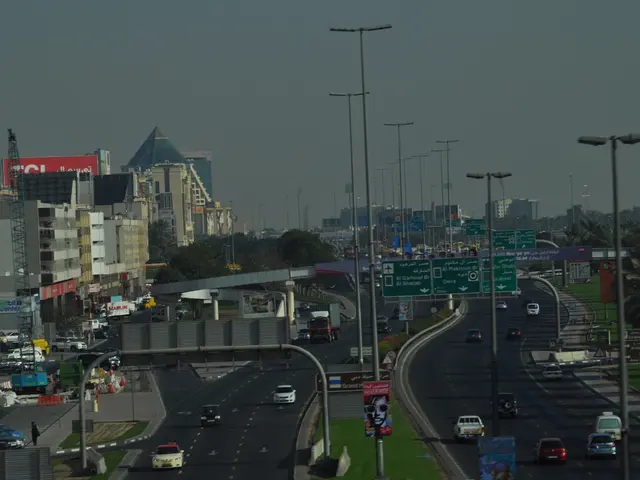Wildfires Ignite in California, Causing Chaos in Supply Chain and Forced Evacuations
California Wildfires: A Battle Against Climate Change and Unfavorable Conditions
California is once again battling a devastating wildfire season, with the Palisades Fire being the latest threat. As of Tuesday evening, the uncontained blaze has scorched over 2,921 acres, causing widespread destruction and displacement.
The National Interagency Fire Center and the state of California have joined forces to coordinate relief efforts, but the situation remains dire. Strong Santa Ana winds, with gusts reaching up to 100 mph, have significantly hampered firefighting efforts and made the spread of flames even more unpredictable.
These winds not only fuel the spread of flames but also make it hazardous for aerial firefighting operations. The high winds have forced utility companies to implement preemptive power cuts, leaving over 300,000 residents in the dark.
Governor Gavin Newsom has declared a state of emergency, and major highways, including parts of the Pacific Coast Highway and Interstate 405, have been closed due to fire activity and smoke. Air traffic has been impacted as well, with flights at nearby airports experiencing delays due to poor visibility caused by smoke.
The fires have forced the evacuation of over 30,000 residents from affected areas, including the upscale neighborhood of Pacific Palisades. Local shelters have quickly reached capacity, adding to the logistical challenges of accommodating displaced residents.
The scale and intensity of the wildfires highlight the ongoing challenges posed by climate change and the need for enhanced disaster preparedness. The ability to respond effectively in times of crisis, including ensuring swift evacuations and maintaining supply chain continuity, is crucial.
Supply chains for essential goods, including food and medical supplies, are under strain as warehouses and distribution centers in affected areas either shut down or operate at reduced capacity. Freight and delivery companies have reported delays, with rerouted trucks facing longer transit times and increased fuel costs.
Despite the challenges, federal assistance has been secured. The Federal Emergency Management Agency (FEMA) is coordinating efforts to provide aid to affected communities. Officials warn that the high winds are expected to persist, potentially worsening the situation.
Residents and businesses alike are left to adapt as California battles yet another devastating wildfire season. Many evacuees had to navigate heavy traffic and some abandoned their vehicles to escape on foot. The resilience of Californians in the face of adversity continues to be a testament to their spirit.
Read also:
- Peptide YY (PYY): Exploring its Role in Appetite Suppression, Intestinal Health, and Cognitive Links
- Toddler Health: Rotavirus Signs, Origins, and Potential Complications
- Digestive issues and heart discomfort: Root causes and associated health conditions
- House Infernos: Deadly Hazards Surpassing the Flames








